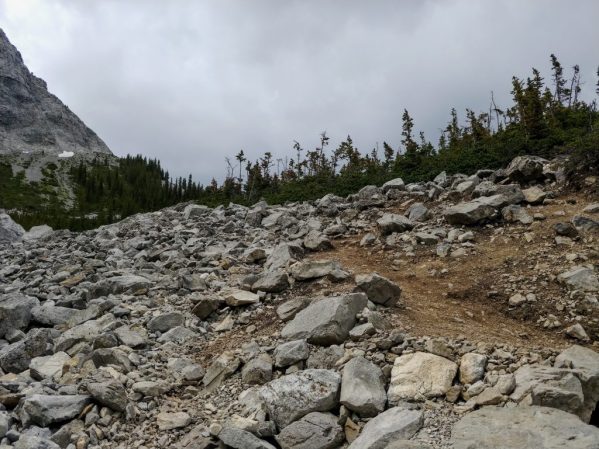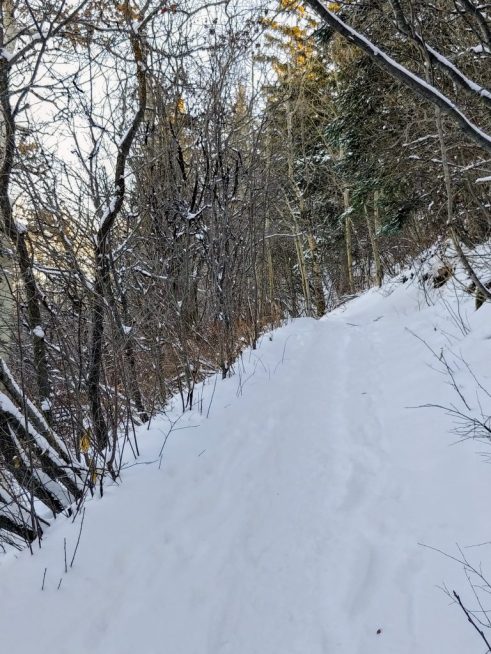When I published a series of poems in the journal Poetry at Sangam last October, I could not anticipate how prescient the following passage would be:
a shiver of unease
runs its course across
my shoulders, shudders
down a rocky spine
to dissipate
through fissures
in this sleeping
mountain
mine
The vertebrae of my imagined backbone have come to haunt my movements this past month; I am suddenly aware of every step as it reverberates through my skeleton. A bone scan in January, ordered by my psychiatrist, revealed I have osteoporosis. I knew it was a real risk—my birth gender and family history have always figured in my calculations—but I assumed that the possibility lay somewhere in the future, when I was older, or, that is, older than I already am. I was, however, unaware of the impact on bone density of a medication I’ve been taking as a mood stabilizer for over twenty years. My family doctor, scrolling through his cell phone during our appointment to discuss the test results, insisted he could find no sign of a connection. It is there, I have since checked, but it’s now too late.
Coming as it has with a dreaded milestone birthday on the horizon, I met this diagnosis with sadness and a new kind of fragility.
 I’ve resisted sharing any details publicly for a while. As upset as I was, I feared it might be discounted—I mean, it is something you can live with and my condition is essentially borderline at the moment; my upper lumbar region scores just within the osteoporosis range, while my lower lumbar and hips are in the risk range. But anyone who has observed the physical disintegration this disease can cause, who has been close to someone who has fractured bones and lost mobility, cannot help but fear a future in which they too are hunched over and hobbling along. My mother was increasingly crippled by osteoporosis and, although she lived to the age of 82, by the end she was a weary, frail little bird, ever at risk of falling, with a spine ultimately so twisted that she basically suffocated slowly during her final weeks.
I’ve resisted sharing any details publicly for a while. As upset as I was, I feared it might be discounted—I mean, it is something you can live with and my condition is essentially borderline at the moment; my upper lumbar region scores just within the osteoporosis range, while my lower lumbar and hips are in the risk range. But anyone who has observed the physical disintegration this disease can cause, who has been close to someone who has fractured bones and lost mobility, cannot help but fear a future in which they too are hunched over and hobbling along. My mother was increasingly crippled by osteoporosis and, although she lived to the age of 82, by the end she was a weary, frail little bird, ever at risk of falling, with a spine ultimately so twisted that she basically suffocated slowly during her final weeks.
All my life I have struggled with a deep discord between my body and my existential sense of being—my self—a disconnect that transition from female to male shifted but did not resolve. Of late I had taken to mediating it through movement. When a stride flows smoothly I feel good. There have been plenty of times in my life when walking was difficult for a variety of reasons, but since I moved to a location with a network of challenging paths and trails snaking across the embankment just minutes from my building, walking, hiking, and short bursts of running have become vital to my sense of well-being. My first thought when I learned I had osteoporosis was that this might change. Weight bearing aerobic exercise is essential to building bone, or fighting off further loss, but many of the online sites I visited warned against hiking and jogging, suggesting instead walking and ballroom dance.
Excuse me?
If I wasn’t feeling instantly aged with the bone scan report, I suddenly felt antique.
So, in addition to adding calcium and vitamin D supplements (and taking a few risky forays into the woods on dangerously icy trails because I refused to give up gracefully) I made an appointment to see a physiotherapist at a sports medicine clinic. It’s been great. We’re working on appropriate exercises to increase joint flexibility, core body strength and balance, with the goal of allowing me to develop a set of regular stretches and a weight training routine to complement my aerobic activities.
And the best thing? She doesn’t see why graded jogging or running cannot be part of my overall effort to slow, even reverse the bone loss.
 It’s a strange thing, this recent shift in my relationship with this body, this space I was born into that has always been such an uneasy fit. I’ve struggled with a mood disorder, come to terms with my gender identity and survived a cardiac arrest but somehow this feels different. It feels like coming into a new awareness of the fragility and the strength of my skeletal frame has offered me an opportunity to grow into an new organic connection with my body. To truly take ownership of it as I head into this new phase of life.
It’s a strange thing, this recent shift in my relationship with this body, this space I was born into that has always been such an uneasy fit. I’ve struggled with a mood disorder, come to terms with my gender identity and survived a cardiac arrest but somehow this feels different. It feels like coming into a new awareness of the fragility and the strength of my skeletal frame has offered me an opportunity to grow into an new organic connection with my body. To truly take ownership of it as I head into this new phase of life.
To finally wake this sleeping / mountain / mine.

So there’s a silver lining, of a sort.
I must say that I would love to be able to walk trails like the ones you show us in your photos. My bushwalking days were over once I wrecked my ankle, and I miss it. I never did anything really arduous like The Offspring did, but a day out in the bush with no concrete in sight is a wonderful thing.
LikeLiked by 1 person
I feel optimistic, I’m beginning to see this is a wake up call not a metaphorical death sentence. I have to be cautious though, try to avoid falling, but that’s been a concern since I’ve had to live on blood thinners. I have ice cleats for the trails around here of course.
LikeLiked by 1 person
I’ve learned to live with mine too. When I travel, I take a walking stick, and I wear a brace. My worst nightmare was one night in South Australia and we’d had a nice night out (i.e. one or two glasses of wine) and I foolishly said yes to a walk along the pier in the dark. When I stumbled into a hole in the planks with my bad ankle, I sprained the other one when I was trying to keep my balance. That was the end of the holiday, we had to go home.
Not the world’s greatest tragedy, but it would have been awful if it had happened somewhere far away on a trip that we’d saved for, for years.
LikeLiked by 1 person
So glad that there is a positive at the end of this, Joe, and that action can help – and how wonderful that you have a good physiotherapist to support you. Movement can only be good for your bones in the long run, as well as for your state of mind. x
LikeLiked by 1 person
Yes! There are always alternatives and sometimes these events are just the incentive that we needed, to encourage us to look beyond what we had previously viewed as a limitation. A family member has used complementary healing practices (a whole assortment, all no-cost or very-low-cost, to restore bone health and regeneration) and is now in better health than twenty years ago. Small (and carefully placed – cleats, great idea!) steps and you can do this!
LikeLiked by 1 person